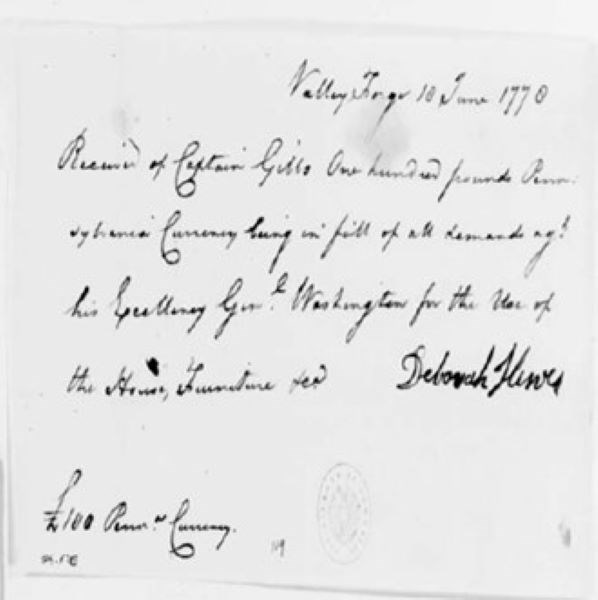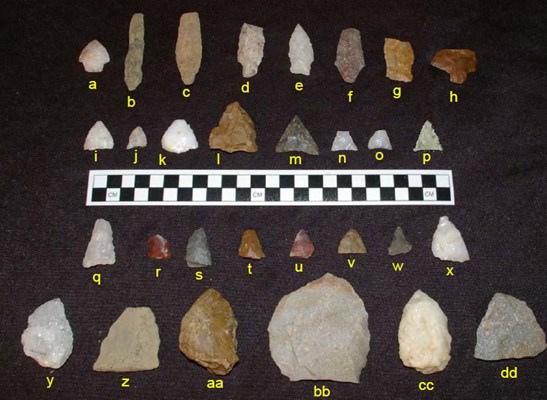Last updated: August 29, 2024
Article
A Meeting of Minds, Methods, and Peoples: Public Archeology at Washington’s Headquarters

A mere single line in a letter Martha Washington, George Washington’s wife, wrote to a friend on March 17, 1778 tells of an additional log cabin dining hut that did not exist before the encampment. Other historical accounts mention Washington’s habit of dining regularly with his senior officers, so the hut may have been meant for such occasions. Washington had also erected housing for his personal guards adjacent to his headquarters, and he raised similar accommodations at other encampments, so the dining hut would not have been unusual.

Putting the Public on the Ground
A 1973 investigation carried out near Washington’s Headquarters uncovered portions of stone foundations for two 1800s structures, an older stone-lined well, and a buried ground surface. The project also introduced two privy or trash pits but failed to discuss them in greater detail or clarify the extent of their excavation. In 1986, earth-moving equipment involved in installing a drainage swale exposed intact portions of the stone foundations walls uncovered in 1973 and concentrations of late 1700s encampment-period artifacts. Their locations were carefully mapped for future study.Twenty years later, two archeologists re-examined the artifact assemblage and data from the 1986 project. They concluded the features could likely be attributed to General Washington’s occupation of the Potts house. Arranging archeological investigations in 2009 and 2010 to coincide with the re-opening of Washington’s Headquarters, which had been undergoing a series of repairs and renovations, allowed for maximum public visibility.
Nearly 90 volunteers contributed over 1,000 hours to the field and the lab phases of the project. With the expertise of archeologist Joseph Blondino, three graduate students at Temple University, and former park archeologist Dr. David Orr, the team focused on verifying and refining the previous projects’ finds.
Volunteers were not the only ones to benefit from the high interactivity of the 2009-2010 project. Hundreds of park visitors a day stopped by the active archeological site to meet the archeologists, pose questions about the process, and even handle artifacts under supervision. Few left without witnessing workers retrieve at least one object from the ground. Features were equally as instructive as the artifacts themselves. A preserved 1700s ground surface prompted archeologists to offer informal lessons on stratigraphy, and additional discussions arose about topics including site formation processes, sources of disturbances, and separating deposits from different time periods at complex sites.
A web blog accompanying the 2009 project expanded participation to those unable to physically visit Valley Forge. Each weekly installation deepens readers’ understanding of the decisions, skills, and analyses underlying every archeological finding. The entries also break down archeological terms like context, fill, and field journals while relating them to the ongoing investigation.Public archeology, though a single part of the eventually three-year endeavor at Washington’s Headquarters, proves there is no one best way to contribute to archeology. Archeology welcomes everyone’s help, whether it is through hands-on digging in the field, cleaning artifacts with a toothbrush, or simply slowing down to appreciate community members at work.
Results of the Archeological Investigations
In the 2009 field season, the team ultimately opened 21 excavation areas. The well noted in 1973 turned out to be located entirely within, and partially incorporated by, the neighboring two stone foundation walls, so it would have provided water to Washington’s household. The team found no evidence of the dining cabin but did detect three features. The first feature, a buried 1700s plow zone, contained charcoal and the scattered discard of hearth sweepings that confirm it marks the rear of the house.The remaining two features, both refuse pits, date to the last quarter of the 1700s. Almost 90% of the ceramics in one pit came from the Colonial period. The second trash pit displayed exclusively 1700s objects. Notable is a brass “double-D” buckle that would have been used on a shoulder strap for a knapsack or cartridge box. A cherub creamware piece that probably once decorated a soup tureen or similar serving piece is indicative of class differences at the encampment, as no enlisted soldier could have afforded such a fancy piece. Recovered animal bones also have the potential to elucidate class differences by distinguishing Washington’s diet from that of his enlisted soldiers.

The 2009 and 2010 field seasons yielded minimal military-related objects, such as buckshot, musket balls, and a tomahawk head, from the Revolutionary War era, owing to the Headquarter’s administrative nature. Continued efforts in 2011 explored targets divulged by a ground-penetrating radar (GPR) survey conducted after the close of the 2010 season. None of the anomalies proved to date to the encampment period.
The Continental Army and the individuals who farmed the Valley Forge area were not the only occupants of the land. The three field seasons revealed a host of artifacts from a minimum of five distinct precontact occupational periods, which is unsurprising given the site’s fertile location at the confluence of Valley Creek and the Schuylkill River. Nearly everywhere archeologists recovered items from the Colonial period, signs of precontact occupations also emerged.

Of note is a possible gorget, a pendant worn around the neck, made of phyllitized slate. The gorget is broken, undrilled, and thicker and rougher than a typical finished version, so it most likely broke while being made and was discarded before anyone wore it. Another unusual find is a small, basin-shaped pit containing wood charcoal and highly fractured animal bone, most likely from deer. Lab analysis identified seeds and nut hull fragments, charred corn cob fragments, and charcoal from the burning of small sticks or twigs. Although the pit resembles Native American “smudge pits” from late precontact sites in other regions, radiocarbon dating and stratigraphic analysis places its use at or just before the construction of the Potts house (estimated to be in the 1760s).

Bringing the Periphery into the Center
Intent matters in archeology as much as what is done with its results. Public archeology projects at Washington’s Headquarters, for instance, demystify archeology for community members while encouraging participation from people of all ages, physical abilities, and experience levels. This inclusivity extends into the past as well as the present.Instead of relegating precontact artifacts to the periphery because they did not fit the project’s focus, the 2009-2011 projects realize a more complete picture of occupation in the Washington’s Headquarters area. Treating all artifacts and features as worthy of preservation and study enhances the layers of history embedded—and often obscured—within the larger cultural and historical landscape of Washington’s Headquarters.
Resources
Blondino, Joseph R. and Jesse West-Rosenthal. Results and Interpretations of 2009/20010 Archaeological Investigations at Washington’s Headquarters (36Mg31), Valley Forge National Historical Park, Upper Merion Township, Montgomery County, PA. Report prepared for Valley Forge National Historical Park, National Park Service, 2011.Blondino, Joseph R. et al. Results and Interpretations of 2011 Archaeological Investigations at Washington’s Headquarters (36Mg31), Valley Forge National Historical Park, Upper Merion Township, Montgomery County, PA. Report prepared for Valley Forge National Historical Park, National Park Service, 2012.
Washington’s Headquarters Blog. National Park Service.
